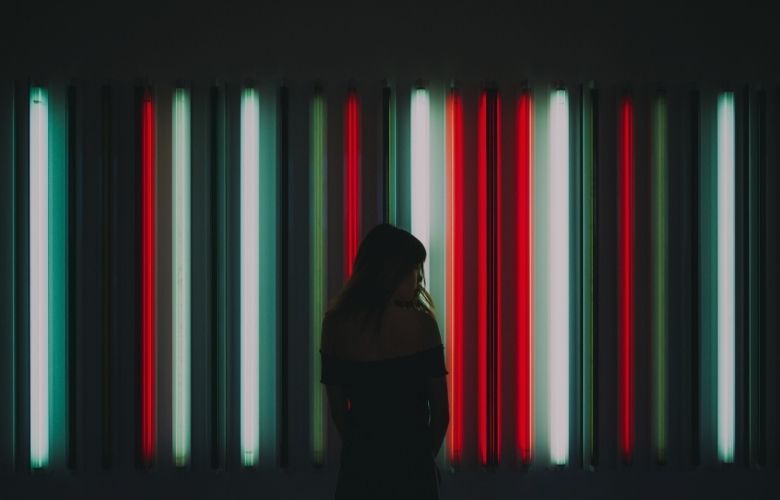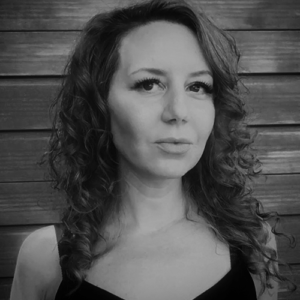
Queensland University of Technology (QUT) have successfully moved online following the Covid-19 pandemic. Anthony Brumpton and Tessa Rixon speak to TheatreArtLife about how they successfully incorporated the move, and what the future holds.
Anthony Brumpton is a Lecturer in QUT Technical Production major, and professional Sound Designer whose research explores practices in aural scenography. Tessa Rixon is a Lecturer in QUT Technical Production major and researcher specialising in scenography, digital performance and technology.
QUT BFA Technical Production graduates work across a range of performance forms – theatre, dance, opera, festivals, music, corporate events – as technical directors, stage managers, production coordinators, designers (including set, costume, lighting, sound and vision), technologists and operators, producers, tour managers, and more. Our teaching staff include Anthony Brumpton (Production Practice/Sound Design/Intermedial Theatre), Tessa Rixon (Scenography/Vision), and Carly O’Neill (Stage Management).
Anthony: As a result of social distancing laws in Australia, our Production degree shifted entirely online approximately 4 weeks into our first semester in mid-March. As we’re based in Queensland, Australia, we run Feb-June, July-Nov semesters. Like many other institutions around the country, this was a quick and sudden process, and we needed to shift very hands-on teaching into a virtual space. We ran primarily off Zoom for our classes, which worked well to maintain connections to our cohorts but posed a big challenge for teaching practical skills – and creating shows, of course.
We solved the teaching side of the equation by shuffling content around between semesters, bring forward theory and delayed practical work until Semester 2. Fortunately, due to the state of COVID-19 in Queensland, we were able to return to the studio for our second semester (July onwards) and begin to catch up on the hands-on training. We’re very fortunate in this regard, but of course we still have one eye on the back-up plan if we need to shift to online learning should another outbreak occur.
Tessa: The production side of the equation was a whole different story. Naturally, with the shift of teaching online, our intuition cancelled public performance works. This drove us to design a new production experience for our second and third year students – The Virtual Theatre Production project. Our students worked in small teams and were tasked with designing, managing and planning fully conceived theatrical works to the point of bump-in/load-in.
The Projects included five performances – ranging from Shakespeare to classic Australian plays as well as a new adaption of Keri Hulme’s Booker Prize winning novel The Bone People – which were developed over two months to the point of virtual design presentations. Constrained by real-world budgets, venues and production schedules, the young designers were guided by a team of expert lighting, vision, sound, set, props and curatorial mentors through intensive Zoom sessions.
We created a detailed 3D model of our university’s proscenium arch theatre to serve as the virtual space for the production. Working with computer-aided design programs including SketchUp, AutoCAD and Vectorworks, lighting visualisation software in the form of ETC’s Augment3D, and costume and props digital render tools, students combined both traditional analogue techniques with digital design processes. This was an entirely new approach to using visualisation technology within technical theatre training in the university. We were so impressed by the learning experience that we’re looking to integrate the task into the course in the future.
Of course, this rapid change in the first half of the year bought with it many challenges. The main challenge was maintaining our connection with our students, being able to support them through learning and assessment in such a difficult time. Zoom fatigue was a difficulty we had to overcome, especially as the students were spending hours collaborating on their virtual theatre projects. We as educators learnt so much about how to run effective online learning, and have had a chance to make positive changes this semester.
We’re fortunate in Queensland that we have been able to return to campus since July, and all going to plan will be able to see out the rest of our year this way. However, our day to day is still very different. We have many new rules and restrictions in place to manage outbreaks. We have had to adapt our teaching to ensure we can connect with our international student cohort who are locked out of the country due to border controls.
This has increased the need for us to work across both live and streamed platforms when teaching, and find ways to ensure our international students can still participate in hands-on skills despite being in a different country! And while public performances are still off the cards for this year, we’re finding ways around getting the students back in the theatre, making performance happen, and getting it out to an audience.
While the students have been allowed to return to campus this semester, we are still faced with the new social distancing restrictions, which includes no outside audiences. To address this, we adapted the first performance of the semester to be lived streamed to remote audiences. Looking Through Glass was loosely inspired by Lewis Carroll’s Alice Through the Looking Glass and utilised intermedial theatre practices to investigate themes drawn from Carroll’s nonsense novel, as a way to explore the current reality we are experiencing. Stemming from a unit dedicated to intermedial performance and design, it was an ideal candidate to adapt to live streaming.
The project was designed from the ground up to be viewed online, with two possible scenarios: The first option was designed so each student could be in their own home with their sections being curated through Zoom; The second option allowed for the students to work in single black box space with appropriate social distancing measures in place.
Both options were developed, and it wasn’t until one week before bump in that the decision was made to go with option two. While this approach did work, it was not without its challenges. In addition to the extra time (and cleaning) required in most activities, we were also faced with the numerous COVID scares. These required certain students to self-isolate and get tested… including the Show Caller the day before the first scheduled stream.
Despite this the show was able to go ahead due to the rigorous documentation and the ability of the students to quickly adapt their approach and get things back on track each time.
Going into the semester the intermedial performance unit was offered both online and in person. However, by the end of week one, all students had opted to return to campus whenever possible. All the sessions ran synchronised Zoom sessions to accommodate the numerous cases of self-isolation that occurred throughout the process. We believe this hybrid approach allowed students to still adhere to COVID safe working practices without having to compromise their education. As a result, we could see a model where more classes and projects take a blended approach. To do this, each project would need to be assessed individually and – most importantly – be open and ready for changes to normal traditional creative processes.
Anthony: One of the best things we’ve seen come out of this experience is the incredible work students come up with when given the freedom and agency to take control over their processes. In the Virtual Theatre Project, we set certain boundaries including the budget, the venue, and the text itself. While we taught the students a range of software and presentation tools, we did not make them use one tool or another. They had the freedom to experiment whatever worked best to communicate their designs.
This saw a huge range of different styles and techniques emerge, from fully constructed costumes in someone’s living room to detailed lighting sequences visualised in tandem with video design onto a 3D virtual model. We wanted to give the students the room to innovate with this new process, and see what tools or techniques they found – rather than be prescriptive. This meant leaving some ambiguity in the task itself, and we’d recommend this approach to anyone else exploring a virtual design or performance project.
As practitioners and researchers also, we’re keen to share what we have learnt from this experience with our community. We’re currently preparing a paper on notion of reimagining theatre production pedagogy online in response to COVID-19, and will present our approach at the Australasian Drama Studies Conference in December.
If anyone wishes to reach out and share their approaches, or learn more about the method, please get in contact with Anthony and Tessa via:
a.brumpton@qut.edu.au and tessa.rixon@qut.edu.au
QUT on Facebook
QUT on Instagram
Official QUT Course Page
UK Live Music Scene Has First Outdoor Gig & Plans To Reopen Venues
Alice Smart: Interview with a London based Costume Constructor


Michelle is a musician and composer from the UK. She has performed across the UK and Europe and is passionate about arts education and opportunities for women and girls.
Read Full Profile© 2021 TheatreArtLife. All rights reserved.

Thank you so much for reading, but you have now reached your free article limit for this month.
Our contributors are currently writing more articles for you to enjoy.
To keep reading, all you have to do is become a subscriber and then you can read unlimited articles anytime.
Your investment will help us continue to ignite connections across the globe in live entertainment and build this community for industry professionals.